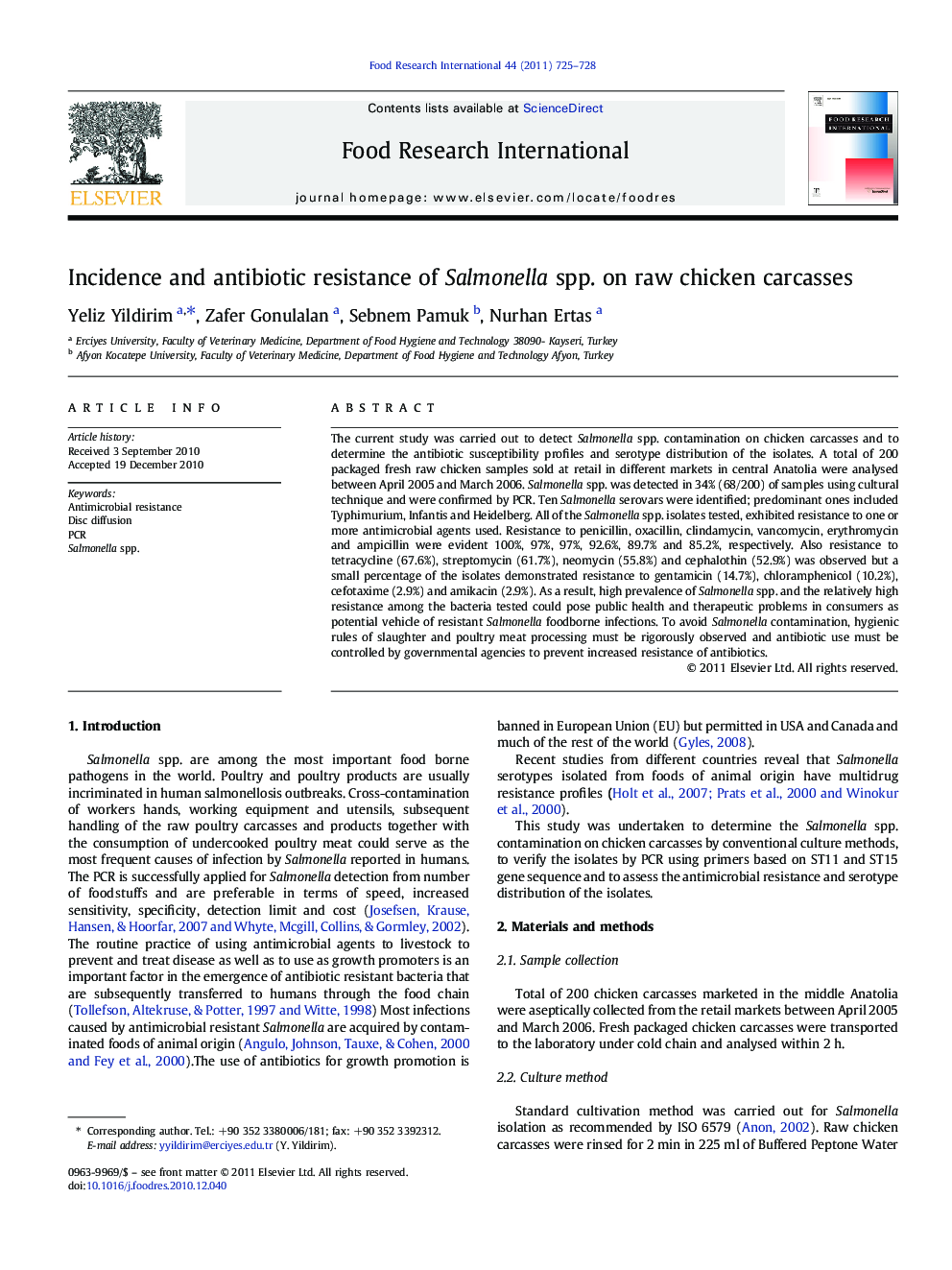| Article ID | Journal | Published Year | Pages | File Type |
|---|---|---|---|---|
| 4561992 | Food Research International | 2011 | 4 Pages |
The current study was carried out to detect Salmonella spp. contamination on chicken carcasses and to determine the antibiotic susceptibility profiles and serotype distribution of the isolates. A total of 200 packaged fresh raw chicken samples sold at retail in different markets in central Anatolia were analysed between April 2005 and March 2006. Salmonella spp. was detected in 34% (68/200) of samples using cultural technique and were confirmed by PCR. Ten Salmonella serovars were identified; predominant ones included Typhimurium, Infantis and Heidelberg. All of the Salmonella spp. isolates tested, exhibited resistance to one or more antimicrobial agents used. Resistance to penicillin, oxacillin, clindamycin, vancomycin, erythromycin and ampicillin were evident 100%, 97%, 97%, 92.6%, 89.7% and 85.2%, respectively. Also resistance to tetracycline (67.6%), streptomycin (61.7%), neomycin (55.8%) and cephalothin (52.9%) was observed but a small percentage of the isolates demonstrated resistance to gentamicin (14.7%), chloramphenicol (10.2%), cefotaxime (2.9%) and amikacin (2.9%). As a result, high prevalence of Salmonella spp. and the relatively high resistance among the bacteria tested could pose public health and therapeutic problems in consumers as potential vehicle of resistant Salmonella foodborne infections. To avoid Salmonella contamination, hygienic rules of slaughter and poultry meat processing must be rigorously observed and antibiotic use must be controlled by governmental agencies to prevent increased resistance of antibiotics.
